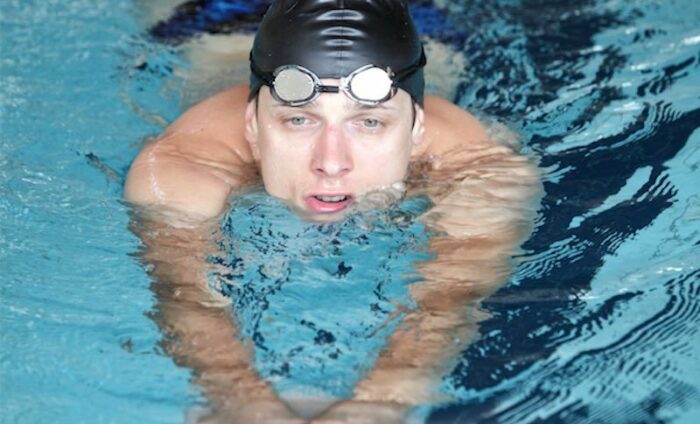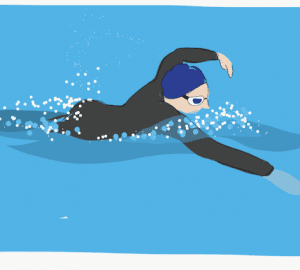
I’m so slow when I kick. Should I be using a float?
Our resident Olympian answers your swimming questions
In the pool I always end up causing a traffic jam when I do kick because I am so slow! Should I be worried about speed? And should I be using a float when I kick? James Bennett
When I use a pull buoy I swim a lot faster. Without a pull buoy my legs seem to sink and cause drag. How can I prevent my legs from sinking? David Meehan
Hello James and David, thank you for your questions. I am going to answer you together as both questions have kick technique as the main issue.
These are common problems that I see with a lot of swimmers I coach, especially those who come from a running or triathlon background. In most sports, when you think of a “kick” you think of how you would kick a football, where the action and power comes from the knee. In swimming, however, you want to be thinking about kicking up with straight-ish legs. When I say straight-ish, I want the leg to be as straight (with toes as pointed) as possible without it being rigid and fixed. Naturally there will be some flexion and extension around the knee joint. Try and imagine your ankles floating to the top of the pool and think “up, up, up” when you kick.
If you generate your kick from the knee and not the hip it will pull your body position down. This can cause your legs to sink in full stroke – hence why it’s easer for you to swim with a pull buoy, David; and it causes a lot of frontal drag when using a kick board, which is why you are slowing down when you focus on kick only, James.
The second issue I see with leg kick is that most people don’t have super flexible ankles – if this sounds like you then when you kick don’t try and force your toes to be pointed as this can give you cramp. Instead, try and turn your feet inwards so your big toes are tapping each kick, this will reduce drag without having to spend hours gaining flexibility.
Finally, when working on kick and using a kick board try and have your face in the water and turn your head to breathe. This will assist in raising your body position and will not make your hips sink as much. I hope this helps you both. Also remember you can still work on kick when you’re swimming full stroke, just slow your arms down and make your legs do most of the work. That way you can still focus on legs without causing a traffic jam.
“Swimming was my whole life for over 20 years. I poured every ounce of enthusiasm into it. I am so fortunate to have found these new outlets for that enthusiasm.”
Cassie Patten won bronze in the first ever Olympic 10km marathon swim, in the Beijing 2008 Olympics. Cassie now coaches and is a frequent commentator at open water events.
@cassiepatten
Email your questions to: editor@outdoorswimmer.com with the subject ‘Coach Cassie’







